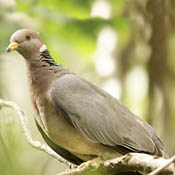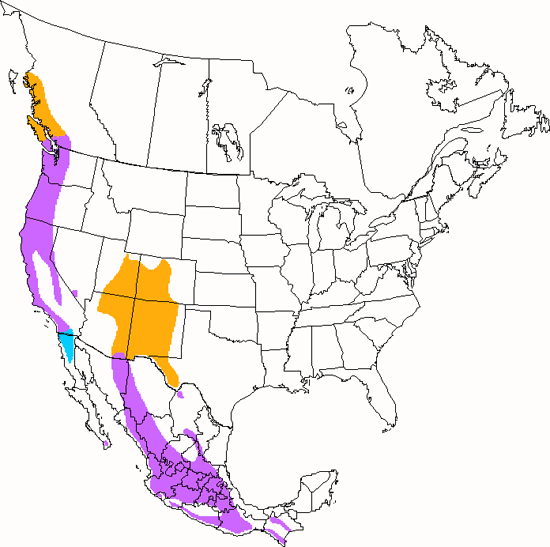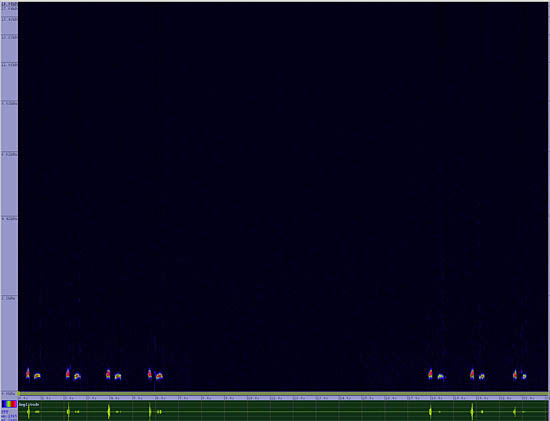Band-tailed Pigeon
Patagioenas fasciata

Pigeon Like

Length: 15 in. (37 cm )
With a range from Alaska to the Andes of South America, this is one of the most wide spread pigeons in the Western Hemisphere. In North America it is associated with conifers and oak woodlands, where it feeds on acorns and other seeds. The Band-tailed Pigeon is usually seen in small flocks. Its crude nest of open twigs is placed in the fork of a high branch or near the trunk of a tall tree, usually high in the canopy. Timing and area of nesting is often determined by density of acorn and pinecone production. Like most pigeons and doves, adults of both sexes feed their young \pigeons milk,\ a nutritious secretion from the lining of the digestive tract.
The four-digit banding code is BTPI.
Bibliographic details:
- Article: Band-tailed Pigeon
- Author(s): Dr. Biology
- Publisher: Arizona State University School of Life Sciences Ask A Biologist
- Site name: ASU - Ask A Biologist
- Date published:
- Date accessed:
- Link: https://askabiologist.asu.edu/activities/bird/band-tailed-pigeon
APA Style
Dr. Biology. (). Band-tailed Pigeon. ASU - Ask A Biologist. Retrieved from https://askabiologist.asu.edu/activities/bird/band-tailed-pigeon
Chicago Manual of Style
Dr. Biology. "Band-tailed Pigeon". ASU - Ask A Biologist. . https://askabiologist.asu.edu/activities/bird/band-tailed-pigeon
Dr. Biology. "Band-tailed Pigeon". ASU - Ask A Biologist. . ASU - Ask A Biologist, Web. https://askabiologist.asu.edu/activities/bird/band-tailed-pigeon
MLA 2017 Style
Be Part of
Ask A Biologist
By volunteering, or simply sending us feedback on the site. Scientists, teachers, writers, illustrators, and translators are all important to the program. If you are interested in helping with the website we have a Volunteers page to get the process started.





